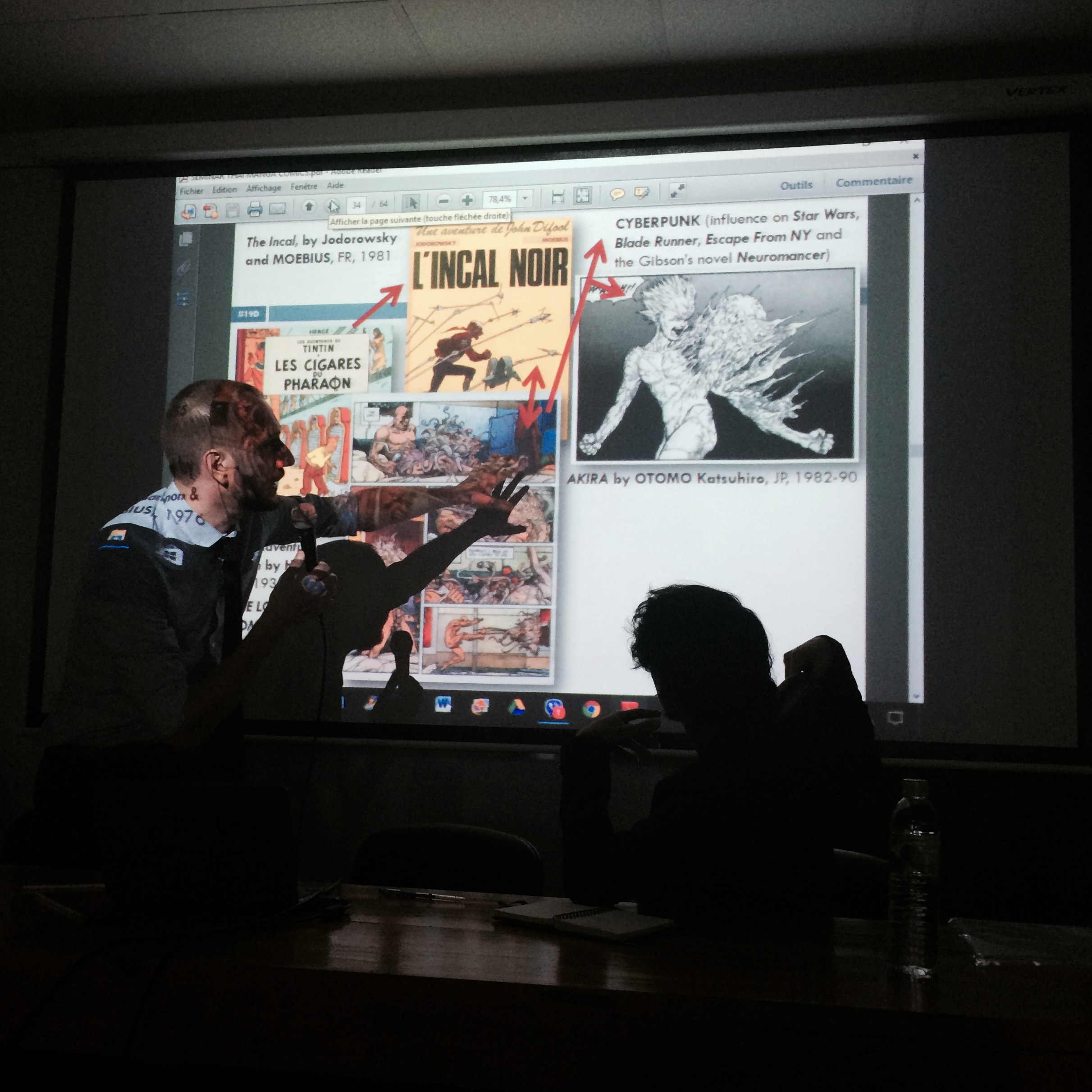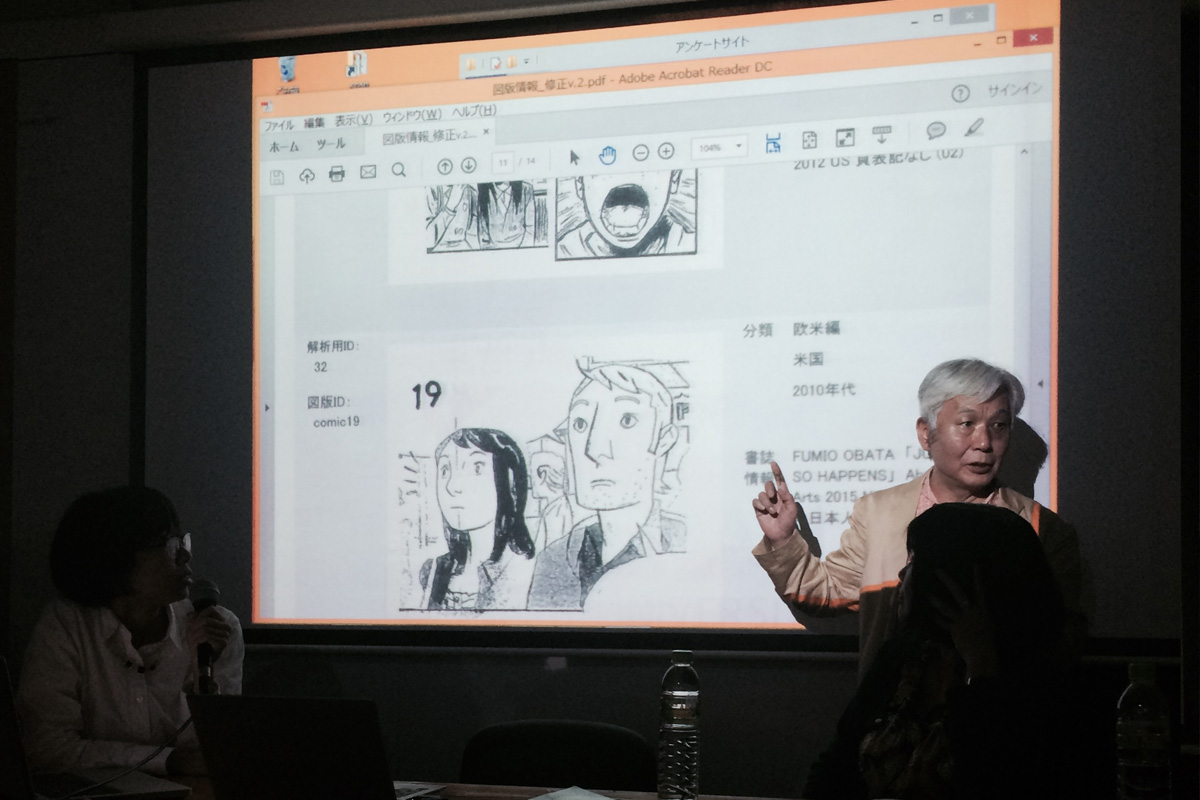WHEN IT COMES TO THE IDENTITY OF THESE STORYBOARDS, THE CONTEMPORARY PHENOMENON OF THE INDUSTRY IS AN INTEGRATION OF STYLES TRANSCENDING CULTURAL BORDERS.
It’s not very often that we see an academic seminar with manga or comics as a topic of serious discussion, and especially one that has manga experts from Japan and Belgium presenting their research and participating in conversations with Thailand’s renowned comic artists such as Suthichart Sarapaiwanich, Songvit Seekittikul and Songsilpa Tewsomboon.
“Identity in comic drawing style” was the main topic of the seminar recently held at the Faculty of Digital Art, Rangsit University. The event welcomed Fusanosuke Natsume, a manga historian from Gakushūin University who was also the winner of the Tezuka Osamu Cultural Prize for his manga critique and Professor Yukari Fujimoto of Meiji University. The two presented their collaborative research where questionnaires full of different drawings were given out to the audience as they were asked to identify the drawings that they thought were those of Japanese manga. The presentation was followed by a discussion session where opinions and points of views were exchanged. Natsume’s conclusion was drawn from his research, which believes that from 2015 onward, the environment and style of comics has grown to be so complex that no one can really tell which is categorized as manga and which isn’t. What appears to be the contemporary phenomenon of the industry is the combination and integration of styles from different cultures.
Then it was Professor Nicolas Verstappen’s turn to take over the stage. The professor is currently teaching at the Faculty of Communication art, Chulalongkorn University and has been doing research on Thai comics. He kick started his lecture with a cover of Chayapruek, a Thai comic book from 1989 that features a mockery of a scene from The Adventures of Tintin (Cigars of Pharoah) (1955) by Hergé and characters from Hayao Miyasaki’s Castle in the Sky (1986). Tracing the strand of thoughts behind the cover, he found that Jean Giraud Moebius was the major link. He explained how Moebius’s work was influenced by Hergé in the same way that Hayao Miyazaki was then influenced by Moebius whose comic The Long Tomorrow (1975) gave birth to the Cyber Punk genre that later highly inspired Katsuhiro Otomo, the creator of Akira (1988). And stylistically, Omoto’s work has had significant impact on Thai contemporary comic artists such as Sutthichat Sarapaiwanich and Ekasit Thairath. Verstappen pointed out the influence of Western comics on the first era of Thai comics, illustrating the transmitted identity and styles that transcend cultural borders.

Thai Manga Comic Seminar, Photo by Wichit Horyingsawad
TEXT: WICHIT HORYINGSAWAD
www.rsu.ac.th/digital/

